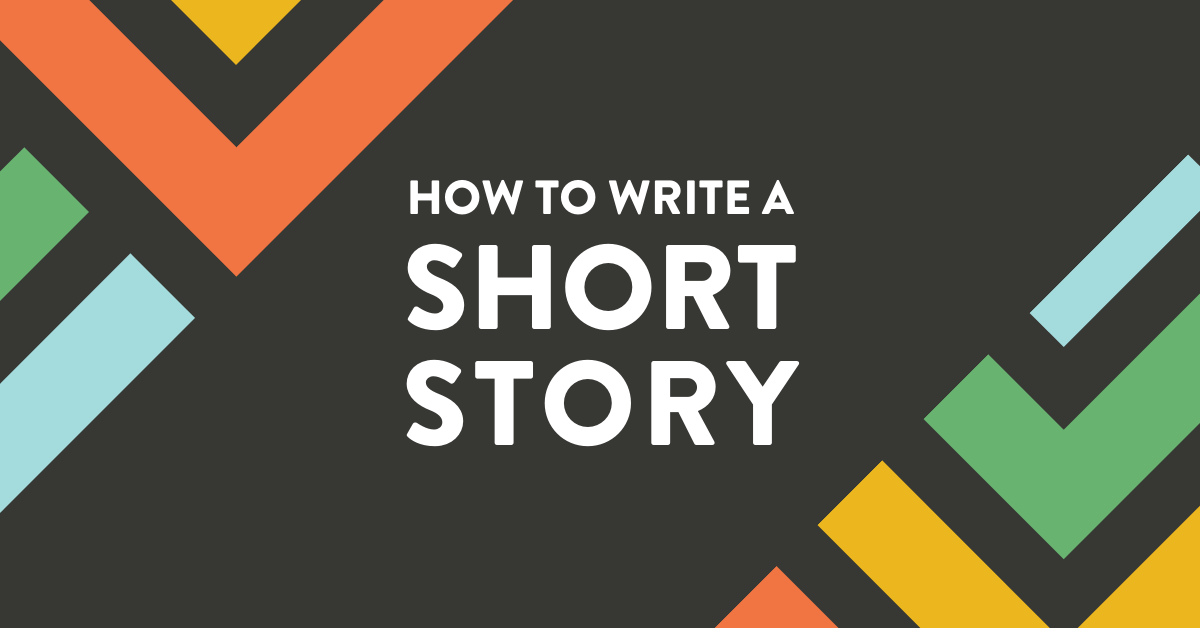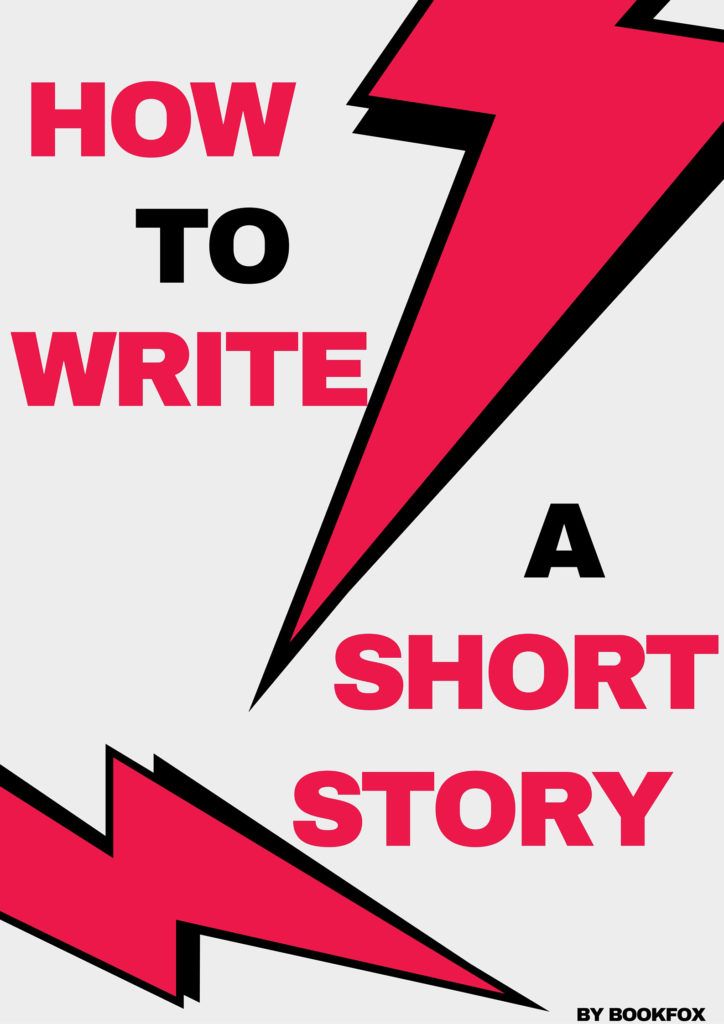 Novels are difficult to write because of size, but short stories are difficult because they require perfection.
Novels are difficult to write because of size, but short stories are difficult because they require perfection.
Any tiny little mistake in a short story becomes magnified into gigantic proportions.
If a minor character fails to come alive in a novel, you can forgive the error because there is so many other things to enjoy, but if a minor character falls flat in a short story, a reader will become annoyed and a literary magazine editor will throw it away.
In a short story, a writer has to accomplish a great deal — details, setting, conflict, plot, character development — in a very small space, usually between 3,000 words and 6,000 words, and that requires concision and revision. Read the tips below to find out how to write a short story that will get published, get readers that love you, and get attention from an agent.
1. Start With an Idea
 The first step to writing a short story is to have an idea.
The first step to writing a short story is to have an idea.
You can get inspiration fromreal-life events – whether they happened to you, a grandparent who told you a story, or even the combination of little tidbits you hear from here and there.
I suggest following a few “weird news” sites,
because I’ve gleaned incredible stories including one about a tourist in Iceland who joined a search party only to discover she was the one being searched for, and another about an ex-Olympian who started prostituting herself not for money but for attention. Take nonfiction and transform it into fiction.
If you’re stuck, consult a short story idea database, or a story idea generator.
2. Pick a Point of View
Is your character telling the story? Then you’re writing in 1st person. “I.”
Are you telling the story for someone else? Then you’re writing in 3rd person. “He” or “She.”
Are you going to go into multiple people’s heads, and tell information that the character can’s know? Then you’re writing in 3rd person omniscient. “He” or “She.”
Now, decide whose eyes the story will be told through. Remember, you can’t switch halfway through the story. Once you pick a point of view, you have to stick with it. A good rule of thumb for beginning writers is to use the protagonist.
3. Learn About Your Character
These are the six questions you have to know about every character:
- What does your protagonist want?
- What major decision or action has your protagonist taken to achieve this?
- What unexpected consequences arise?
- What results from these consequences?
- What morally significant action does your protagonist have to make?
- How has your protagonist changed by the end of the story?
Your job as a writer is to develop a living, breathing character, and the only way to do that is to make sure you know more about your characters than what you ever let your reader know.
Write out everything there is to know about your character from their high school GPA, their earliest memories, and their home address to their first love, their favorite TV show, and their greatest fear.
If you want to get to know your character even deeper, fill out a character questionnaire.
4. Avoid Character Cliches
- Don’t outright explain your character’s appearance, personality, etc. Let readers discover this character on their own as they read.
- Give your character weaknesses. Perfect people don’t exist.
- Give your character at least one unique characteristic. Everyone knows the independent, stubborn female character who is small, stronger than she looks, not very pretty (at least in her own opinion), and can fight like the devil. But does she play the flute? Does she have an embarrassingly ugly laugh? Does she notice the smell of everything?
- If you must have an outright description of a character, make it seem natural. Have the character describe him or herself to another character, or have one character describing the other character to someone else.
Find out some more cliches to avoid and character development tricks.
5. Give Your Character Conflict
Make sure to have conflict. Don’t set up the conflict, start your story right in the middle of the conflict. This is called, “In Media Res.” It means to start in the middle of the action so the reader isn’t bored.
There are several types of conflict, but ask yourself what type of conflict you want to emphasize:
- Conflict with self
- Conflict with others
- Conflict with the natural world
Make sure to “have something at stake.” In other words, what happens if the characters don’t get what they want? It should be something that ruins them. If there is nothing at stake in your story, you need to “raise the stakes.”
6. Show, Don’t Tell
Don’t just tell me that your dad is hilarious. Show me by what he says and does, and then let me decide if he is funny or not.
There’s a difference between writing an anecdote (the type of story you would tell a friend over dinner) and a quality short story (the type of story where readers are set inside the action).
Take these two different types of writing, for example:
1. I’m a pretty easy going person. I get along with everyone including the obnoxious guys from my hometown, but there’s a certain event that rolls around every year that puts most of them on the wrong side of the fence from me. These “couple” games are all athletic based and are meant to build trust and teamwork between “couples,” but no one cares for that. Everyone is after the prize money. Unfortunately, I am pathetically unathletic, so none of the athletic guys from my town have ever wanted to team up with me. I’m too “small,” “weak,” “uncoordinated,” and “clumsy.” They’re not wrong.
2. My eyes scanned the auditorium, but all of the boys seemed to be avoiding my gaze. Basketball scholarship boy was excitedly whispering with the tumbling queen of University of the Cumberlands cheer squad, and the soon-to-be marine was already exchanging information with the girl who had broken our high school hurtle record. Only Seth, the art major who assisted in coaching the middle school soccer team met my eyes with a malicious grin as he put his arm around his most recent fling – a rock-climbing pro from Etowah.
The difference between these two passages is the same as the difference between a good storyteller and a good story writer.
Telling will give the reader the facts, but showing engages their mind, emotions, and imagination. Sometimes it’s good and necessary to give the cold, hard facts (such as emails to your boss), but the writing we’re interested in makes the reader feel something. A story like this will engage the reader in such a way that he or she won’t easily forget it.
If you struggle with being a storyteller, do some writing exercises to help you get better at showing and not telling. One idea would be to take your setting and, without listing the name, describe it. Describe everything about it from the smell, the taste, the appearance, the texture, etc. Leave nothing undone. Imagine yourself as waking up in this setting with no recollection of where you are or how you had gotten there, and now you are straining over every minute detail trying to remember.
7. Advance the Action (Plot!)
Every sentence must do one of two things–reveal character or advance the action.
-Kurt Vonnegut
The plot is what your story hinges on because it is the series of events that take place in your story. It is the storyline, and the sequential events in your novel (exposition, rising action, climax, etc.) are big factors in determining whether or not your story is individually unique or just about the same as everything else out there.
If you want to keep readers on their toes, the plot of your story should always take an unexpected turn, whether at the beginning or the end.
Why?
Because it keeps the story interesting!
Another example:
I went home, opened my laptop, and stared at the black screen for thirty minutes asking myself, Do you really want to do this? Do you really want to dish out around a hundred dollars just to prove a point?
I turned the laptop on, took out my debit card, and typed in the search bar, “rent a guy for a day.”
Because yes. I really did want to do this.
8. First Draft
 Once you have a good idea of the story, a point of view, deep characters, and the idea of showing and not telling in your head, you must simply write.
Once you have a good idea of the story, a point of view, deep characters, and the idea of showing and not telling in your head, you must simply write.
Don’t worry so much about having a catchy first paragraph or too many details right now. Now, you simply need to worry about getting everything on paper.
An 8,000 word story will probably end up as a 4,000 word short story after you go through cutting out unnecessary sentences.
When you finish:
- Edit again. Maybe three or four times.
- Remove sentences that don’t serve a purpose.
- Make sure your beginning is catchy
- Make sure you have a solution to your conflict (can be open-ended with character beginning to change and now see things differently)
- Show it to a critical writing friend and revise based on their suggestions.
- Submit to a literary magazine or publisher!
9. A Final Crucial Trick
I once heard some valuable advice that has stuck with me:
When you write a story, don’t save any of your ideas for later, grander books, and don’t write like you want everyone to like it. Pour your soul into every word and write as though you are writing to please one person.
Why?
Writing to please everyone will water your story down and steal its uniqueness. Even if you’re planning to please a group of people, remember that nothing in the world can replicate the individuality of a single person, and that’s how you should want your story to be.
Also remember that giving your all on every book is important because this book may be the only book that someone reads by you. What imprint do you want to leave in their mind?


10 comments
Thanks! I really enjoyed this post! Short story writing is arguably harder than writing a novel at times. Just like you said, there’s no room for meandering about with your wordplay, that’s for sure!
wow i learn so much stuff in this
this post is as lovely as passion for story writing is..
This was really helpful since I do need to learn how to write short stories, thank you!!!
I really appreciate this post
I have really enjoyed the post and this will help me to teach short story perfectly
yes you really are talking to me but i really still need to understand some few things can you please give me a few tips of a 9th grader bad and good parts please
will this also work on comic books?
wow thanks yr7 noob and this helps a lot
Very practical and helpfu guide to write a good story.